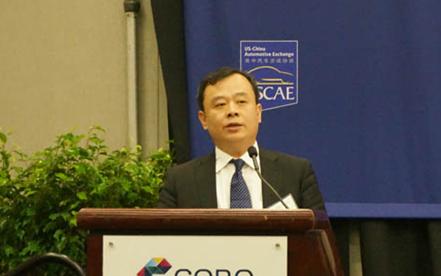“In 2014, China’s exports of US auto parts reached US$11.5 billion, more than doubled from 2010,†Wang Xia, president of the China Council for the Promotion of the China Council for the Promotion of Automobile Industry, told reporters in Detroit that the United States has become China’s largest auto parts exports. destination country.  best home bean to cup coffee machine,best single serve coffee maker,commercial espresso machine for sale Heshan Zilong Home Appliance Technology CO.Ltd , https://www.techonelfoodmixer.com
During the 2015 North American Auto Show, the China Council for the Promotion of International Trade Motor Industry Committee and the Michigan State Department of Economic Development jointly organized the 3rd China-US Automobile Forum with the theme “Shaping the automobile industry across the Pacific Oceanâ€.
"The United States is China's largest source of imported vehicles, and it is also China's largest export destination for parts and components. This fully demonstrates the good complementarity between China and the United States in the automotive industry," Wang Xia pointed out in her keynote speech. . 
Wang Xia believes that China's auto import and export show an active development trend. In terms of auto parts, China's exports to the United States rose from 5.37 billion US dollars in 2010 to 11.5 billion US dollars in 2014, which has more than doubled and shows an increasing trend year by year. The U.S. exports to China increased from 620 million U.S. dollars in 2010 to 1.5 billion U.S. dollars in 2014, an increase of 1.5 times. China and the United States basically achieved simultaneous growth in the import and export of auto parts.
“Chinese imports from the United States are mainly based on complete vehicles, among which are off-road vehicles in passenger vehicles. The United States imports mainly from China into auto parts and parts, and it mainly uses wheels and automotive electronic products,†Wang said. Xia said that in the past five years, China’s exports of U.S. vehicles to the United States fell from 13,278 units in 2010 to 2,700 units in 2014. Although the number has decreased significantly, the export value has seen a slight increase. This is mainly because Chinese car manufacturers have adjusted the product structure of U.S. exports and increased the export of high value-added products such as passenger cars and special vehicles in commercial vehicles. The U.S. auto exports to China have soared from 80,000 in 2010 to nearly 300,000 in 2014, and the amount of exports has also grown at the same pace.
Wang Xia analyzed that with the continuous and rapid growth of China's production and sales, the traditional market pattern of “strong in Europe and the United States and weak in Asia†has been completely broken. Global auto companies including the United States have taken the Chinese market as their strategic focus and sales growth. The main source is that a large number of automotive industry resources in the world are gathering in China, giving China the opportunity to realize the internationalization of industrial strategy, product technology, market, capital and talent. Chinese auto companies have begun to shift from the original learners and followers to global industry competitors and resource integrators. This shift in roles will benefit the global auto industry even more.
The reporter noted that as of the end of 2014, after filing with the Chinese Ministry of Commerce, Chinese enterprises had invested in 215 companies in the automotive industry in the United States with a total investment of US$1.46 billion. Among them, there are five automotive R&D and vehicle manufacturing companies. The total investment of the Chinese side is US$9.38 million; there are 210 auto parts production and trading companies, and China’s total investment is US$1.366 billion, accounting for 94% of the total investment. In this regard, Wang Xia believes that the change from the introduction of capital to the export of capital indicates that the development of China's auto industry has entered a new stage, and Sino-U.S. auto industry cooperation is bound to move toward a new historical stage.
Looking ahead, Wang Xia said that China and the United States, one is the largest developing country, one is the largest developed country; one is a new emerging automobile production and sales country, and the other is a traditional automotive industry power. For China, which is transforming itself from a big automobile country to a powerful automobile country, the United States has a lot of high-quality resources to use. Advanced marketing methods, service models, and strong development management and resource integration capabilities and talent strategies are all worth learning in China. The United States is huge. The market is also waiting for Chinese companies to develop; similarly, for the American auto companies, the huge opportunities in the Chinese market need to be further developed. The Sino-U.S. auto industry cooperation should be from one-way introduction of simple products to two-way investment and all-round cooperation. Development, and cooperation based on complementary advantages and mutual benefits not only contribute to the development of the automobile industry in China and the United States, but also has important implications for the healthy and sustainable development of the global automobile industry.
Finally, Wang Xia emphasized that the Pacific is broad enough, and the space for Sino-US auto industry cooperation is also broad enough.